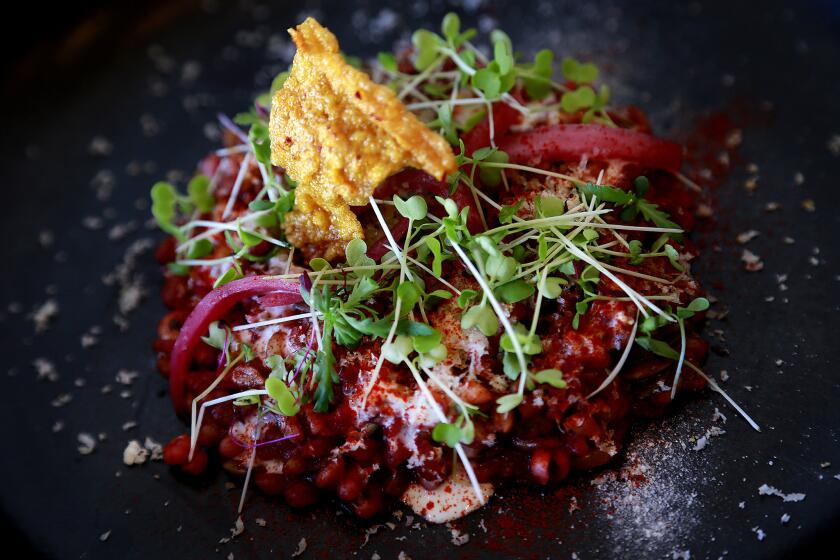Experimental Korean restaurant Baroo reopens with ‘life cycle’ tasting menu downtown
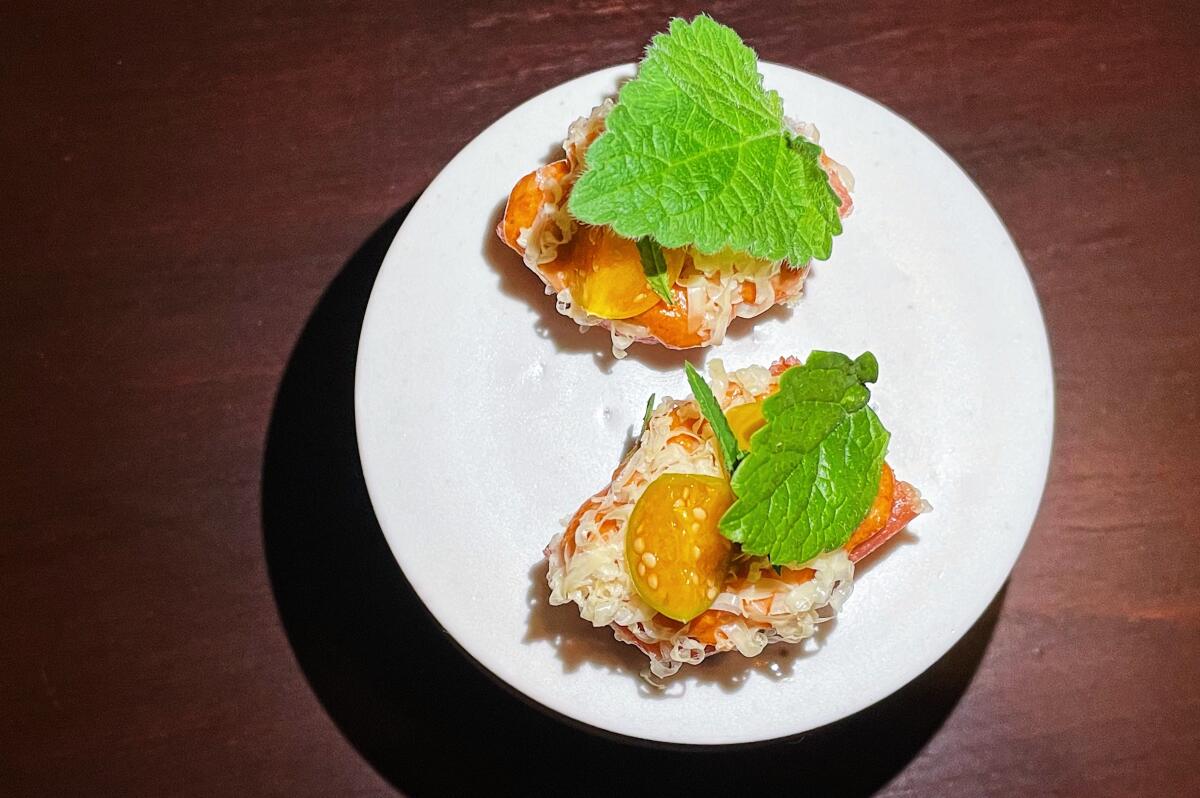
- Share via
Baroo
In 2018, Los Angeles lost one of its most experimental, genre-bending and lauded restaurants. This month, it’s back.
Chef Kwang Uh’s Baroo lit up an East Hollywood strip mall with noorook grain bowls, kimchi toast and pastrami fried rice. Jonathan Gold called it magical and “a taste of the future.” Bon Appetit named it one of the best new restaurants in America. The New York Times wrote that it “epitomized the delicious idiosyncrasies of the city’s restaurant culture.” When Uh called the original format “unsustainable” and shuttered the restaurant in late 2018, news of the closure garnered national interest.
Now, after five years of searching for its new home, Uh and his wife and business partner, Mina Park, have unveiled a new iteration of Baroo, this time in the Arts District, with a tasting menu that weaves Uh’s signature pickles and banchan into courses that chart the phases of life — marking a rebirth for the restaurant.
“The original Baroo was like a test kitchen, very experimental, but this was what he had originally envisioned — something like this,” said Park, the new Baroo’s general manager. “It just took a long time to get there. We never really questioned that; it’s just an evolution.”
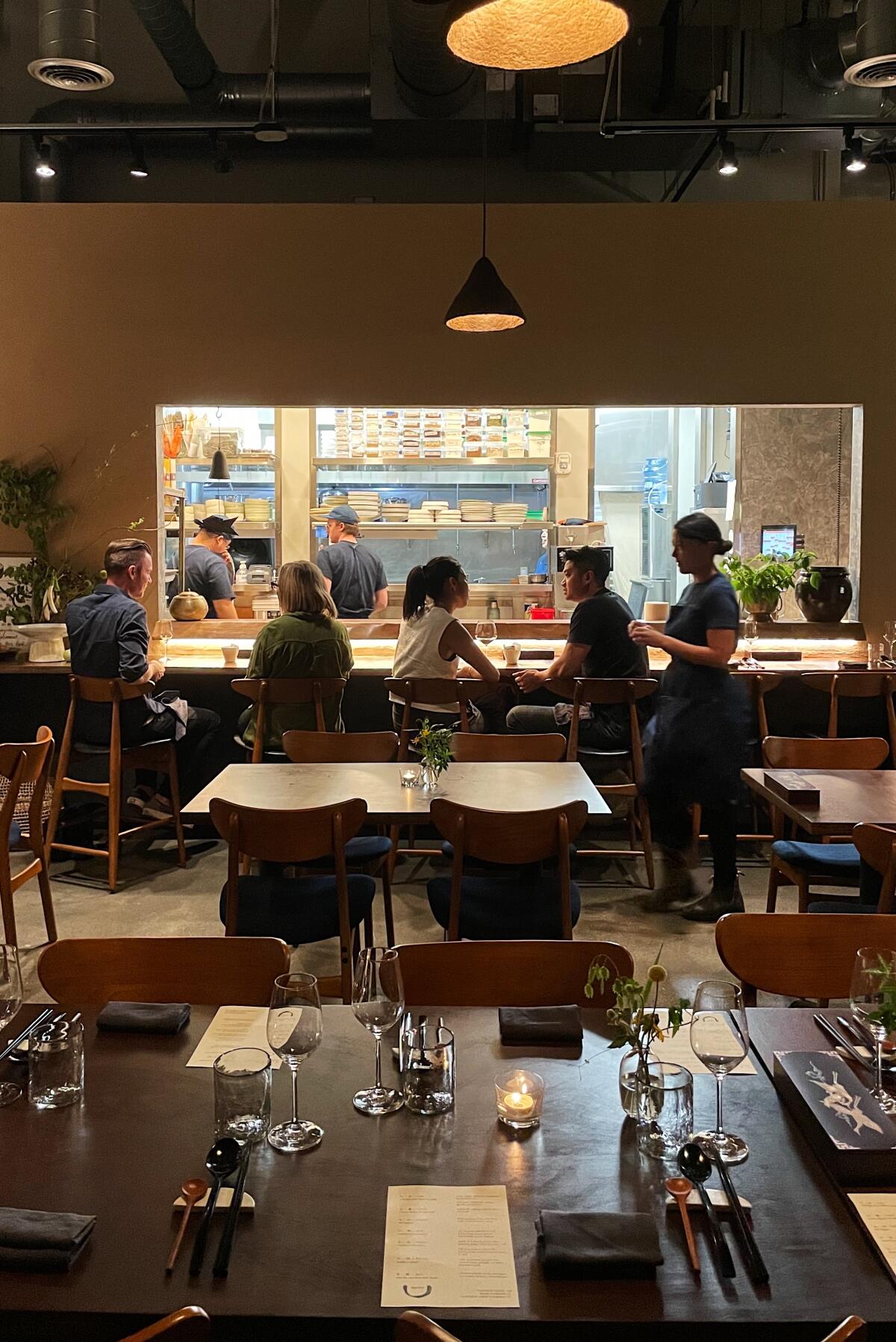
At the first Baroo in East Hollywood, diners perched on Ikea stools and ordered meals priced at $10 or under. A short-lived pop-up called Baroo Canteen was similar, while Shiku, their quick-service food stall in Grand Central Market, continues that casual ethos. The original tiny Baroo space fit scant seating and staff and wouldn’t allow the restaurant to grow. Uh and his then business partner, BBQ + Rice’s Matthew Kim, worked “24/7, six and a half days a week,” Park said.
Even before Baroo closed, Uh and Park were hunting for a space with the intent of opening a new Baroo in 2019. The years of saving and searching — as well as a bit of crowdfunding for the new location — allowed the two to open Baroo 2.0 this month in the former home of Bao Hiroo.
The new location is more than double the size of the original and for the first time offers table service, along with beer and wine. Pickled and fermented vegetables remain a foundation, served as components in a dish or folded into sauces. The opening tasting menu — priced at $110 per person — involves eight dishes that arrive in five courses, each named in Korean for a cycle of life. It begins with tae, a nod to a pregestational period and an introduction to the menu with bites of red-yeast makgeolli bread smeared with ’nduja, sliced pichuberry and a shaving of gouda alongside a bowl of fermented-corn soup with apple, celery and cucumber.
“I think the thing that stays the same is the spirit of the food and the flavor profile,” Park said.
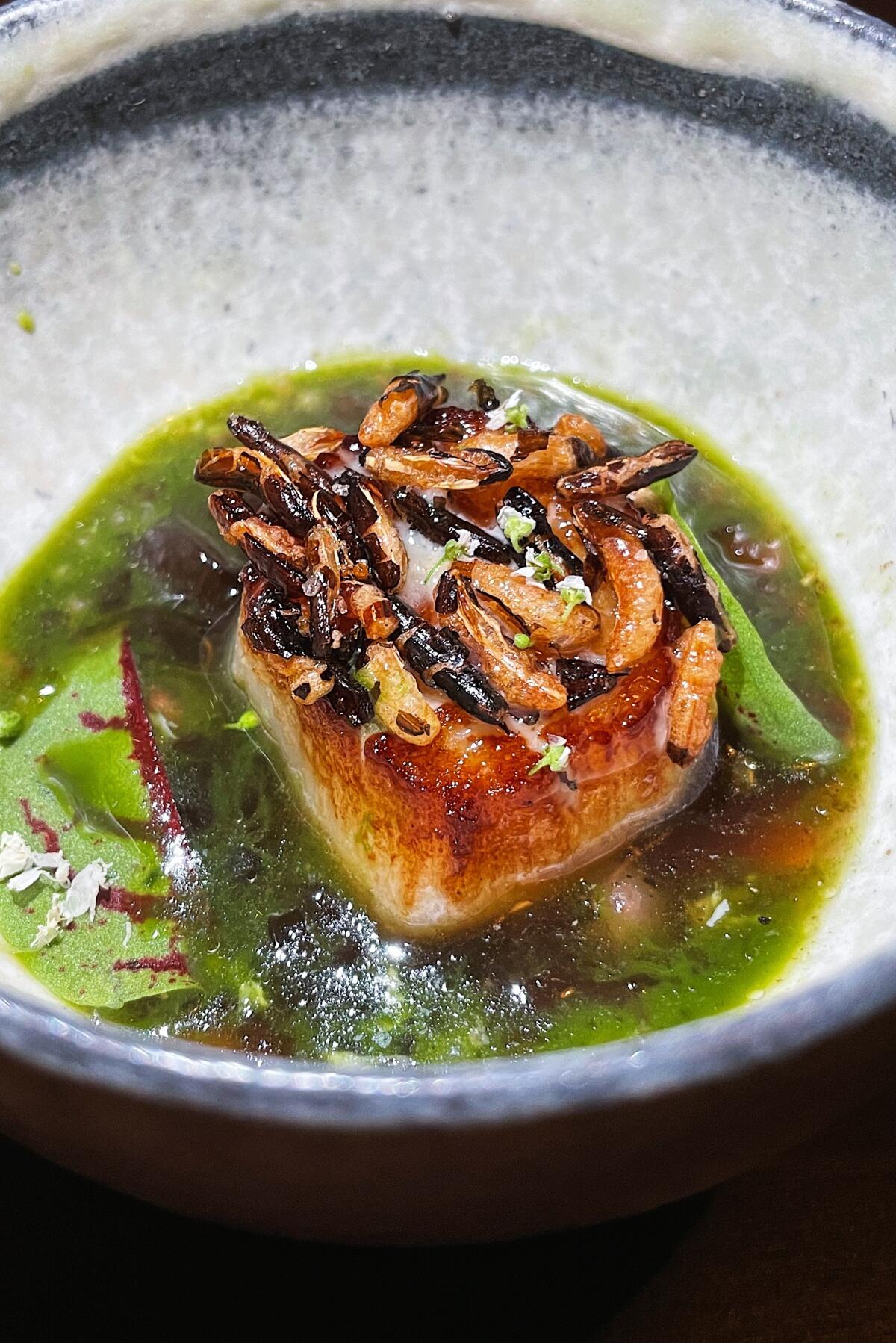
It’s a means of exploration for Uh, who will update the menu regularly. The new format and its price point also allow them to use more ingredients; in the old location, seafood rarely made an appearance beyond the fan-favorite shrimp toast. Here, soy-braised wild black cod nestles up to dongchimi and green papaya, rice-topped Hokkaido scallop swims in minari and gim, and fried, gaejang-style soft-shelled crab arrives as a kind of ssam.
Uh is gradually unrolling menu options, beginning first with his omnivores’ tasting menu, with plans to add tasting menus that are vegan and vegetarian.
Beverage director Jason Lee (formerly of n/soto and Pijja Palace) serves a wine pairing menu along with a la carte options, plus a nonalcoholic pairing. A forthcoming pairing will solely feature alcohol from Korea, such as yakju, plus locally made makgeolli from Pasadena brewer Angma.
Baroo’s new space has about 45 seats, including a six-seat chef’s counter that overlooks the open kitchen. In the future, Uh and Park hope to debut a higher-end tasting menu there, while a small bar near the door features stools where diners will one day be able to order a more casual, a la carte menu. With the largest kitchen they’ve operated yet, the new location is sparking a number of ideas for various items and menu tracks.
“It does feel like a culmination of everything that we have been working on and been dreaming about and thinking about, even since the beginning of Baroo,” Park said. “It feels incredible. We’re kind of in disbelief at this moment.”
905 E. 2nd St., Suite 109, Los Angeles, (213) 221-7967, baroolosangeles.com
Before you read any further, you should probably know that the restaurant I’m about to describe has as its specialty a pink, creamy plate of mold.
Shirley Brasserie
A French-Californian bistro recently opened in the Hollywood Roosevelt Hotel, taking over the former Barish space with seafood towers, wood-fired steaks and tableside beef tartare. Craig Hopson of New York City’s Le Cirque and local bistro pop-up Electric Bleu is leading the kitchen at Shirley Brasserie, which serves a range of French and broader European classics such as chicken liver mousse with duck gelée; truffled risotto; oxtail Bourguignon; escargots; French onion soup; mussels in white wine; and lobster pasta. The raw bar features prominently with caviar service, oysters, king crab legs, salmon tartare and more, as does the wood grill with options for various steak cuts, seafood, whole rotisserie chicken and sides like spinach gratin, grilled green beans and pomme purée. Shirley Brasserie seats more than 100 guests and features a bar turning out classic-minded cocktails such as a white negroni, a house spin on the French 75, and a cardamom-laced milk punch, while the wine program spotlights French, Italian and Californian vintners. The restaurant is open Monday to Thursday and Sunday from 5 to 10 p.m., and Friday and Saturday from 5 to 11 p.m.
7000 Hollywood Blvd., Los Angeles, (323) 769-8888, shirleybrasserie.com
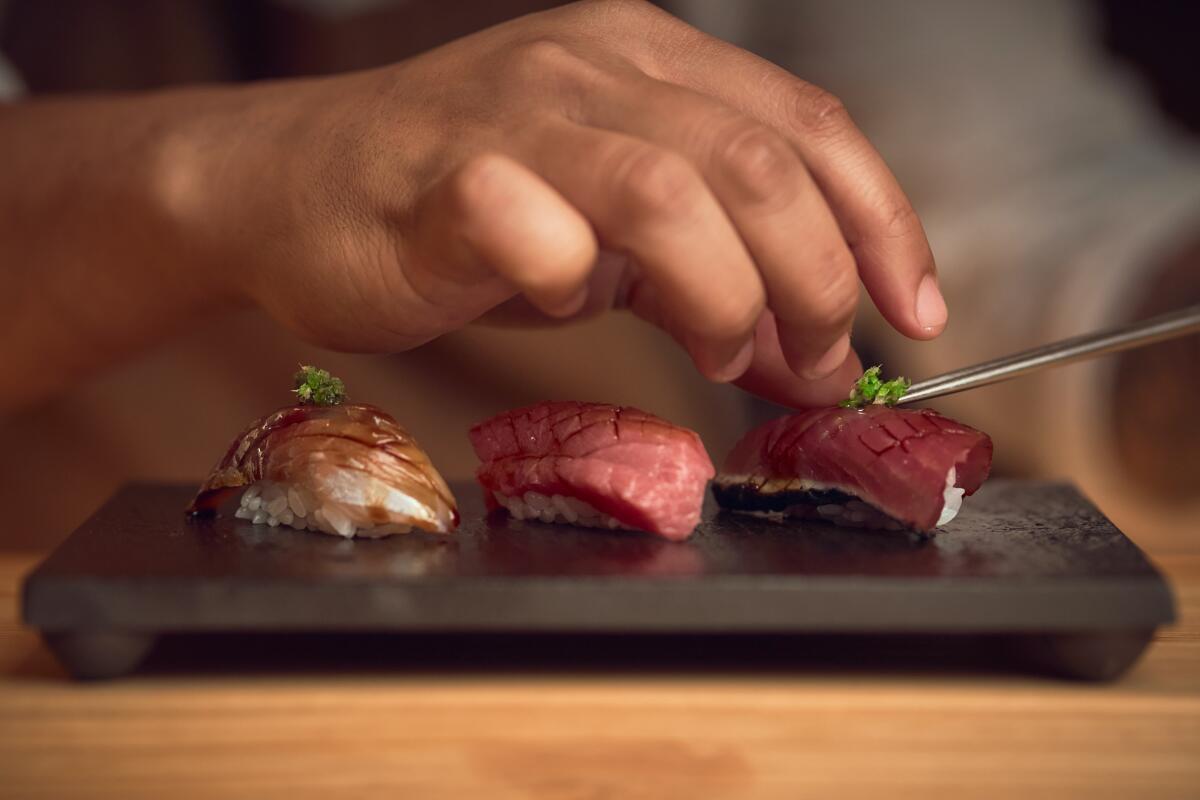
Sushi Note Omakase
Chef Kiminobu Saito expanded his empire this month, building upon his decades of sushi expertise and his two L.A. restaurants — Sushi Note in Sherman Oaks and Sogo at the border of Los Feliz and East Hollywood — with a new omakase-only restaurant. With only 14 seats, Sushi Note Omakase marks a more intimate venture for Saito, whose latest restaurant serves a 20-course omakase from within Beverly Hills’ Rodeo Collection complex, nearly hidden next to the valet stand. Sushi Note in Sherman Oaks also serves an omakase, though the Beverly Hills restaurant offers more courses as well as higher-end selections that will rotate weekly, and often daily, with sashimi, nigiri, hand rolls and dessert. The award-winning wine focus at the original Sushi Note carries through to Beverly Hills, with beverage director Ian Lokey providing pairings unique to the location and available in either a standard track or rare, reserve option. The 20-course omakase is priced at $190, with wine pairings at additional cost. Those with less time to spare can opt for a 12-course, hourlong omakase at $125, which runs from 4 to 5 p.m. Sushi Note Omakase is open Wednesday to Sunday from 4 to 10:30 p.m., with Monday and Tuesday service to follow.
421 N. Rodeo Drive, Beverly Hills, (310) 808-4486, sushinoteomakase.com
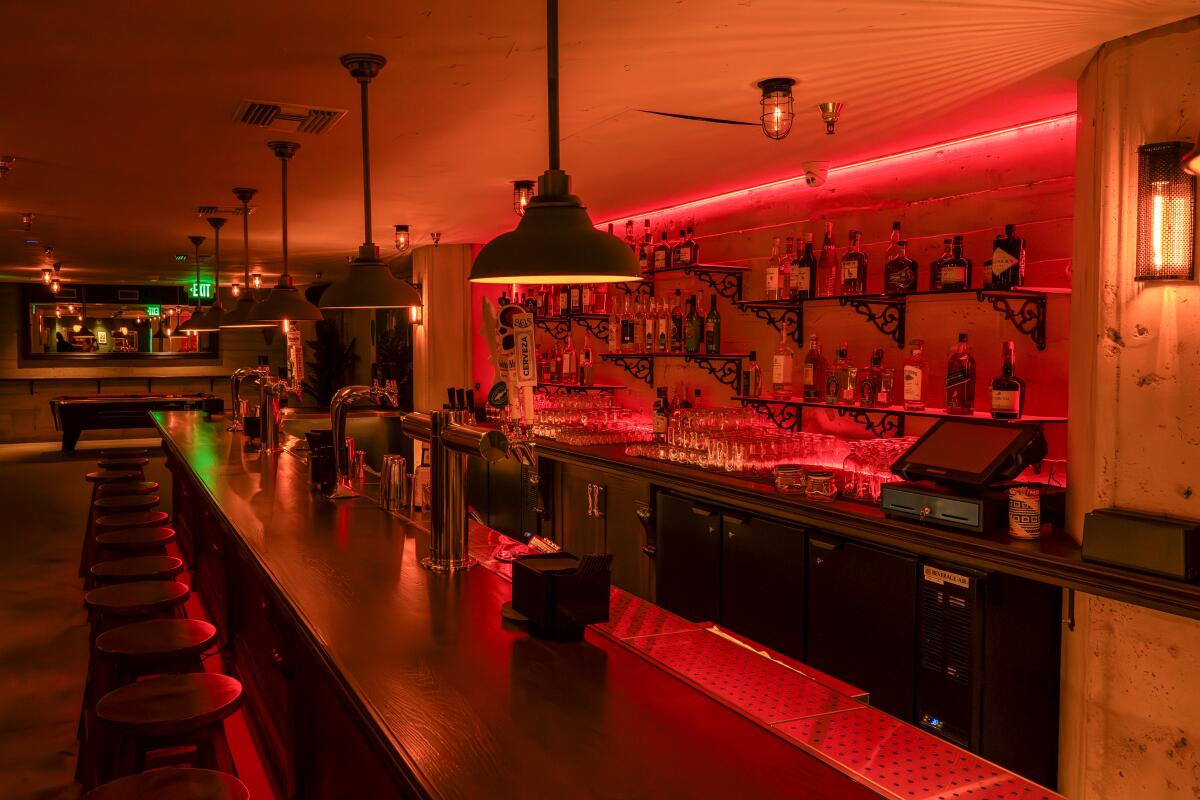
Bar CDMX
Duck into a downtown alleyway to find a new watering hole that aims to pay homage to Mexico City. Bar CDMX is the latest from Pouring With Heart, one of L.A.’s most prolific bar groups and the force behind Las Perlas, 4100 Bar, the Normandie Club, Arts District Brewing Co. and more. At their newest, the focus is on agave- and rum-based offerings, with a selection of Mexico City-ubiquitous whiskeys as well. Oaxaca-raised lead bartender Dante Chavez heads the team, though staff from sibling mezcal-forward Las Perlas and those at rum bar Caña also helped develop the menu. Find a mix of classics — such as carajillos, margaritas and caipirinhas — alongside house concoctions such as the Tropic Thunder made with spiced rum, orgeat, pineapple, lemon and ginger. Bar CDMX can be found in the alley between Seven Grand and Hotel Per La, and is open daily from 3 p.m. to 2 a.m.
515 W. 7th St., barcdmx.la
Mexico City’s popularity among digital nomads prompts a return by a former resident, who asks: Could it really be gentrifying?
Kitchen Mouse expands

After branching out with sandwich and gift shop Topo, then taking over the former Mr. Holmes Bakehouse space, Highland Park’s vegan cafe and bakery Kitchen Mouse has expanded once again. Filling a former doughnut shop at the border of Highland Park and Mount Washington, the latest location offers a casual walk-up window for plant-based pastries, coffee, bagels and pantry staples such as granola and pancake mix. Owner Erica Daking noticed the “for rent” sign more than two years ago and had since worked to ready the space, restoring the interior and coloring the building in Kitchen Mouse’s signature mint green. “I tried to design it like it was Kitchen Mouse opening in the ’60s,” she said. The newest Kitchen Mouse serves a rotation of vegan pastries such as croissants, coffee cakes, muffins and scones, plus a range of fresh bagels topped with the likes of cashew- or coconut-based schmear or options such as smoked-carrot lox with cucumber and dill or banh mi featuring walnut pâté and pickled vegetables. Buckwheat waffles are a signature item at the walk-up window, with toppings including berries, chocolate-and-hazelnut sauce and Earl Grey-infused whipped cream. Kitchen Mouse is open Wednesday to Sunday from 7 a.m. to 1 p.m.
4503 N. Figueroa St., Los Angeles, kitchenmousela.com
Marsatta Experience Centre
South Bay chocolatier Marsatta recently launched a storefront dubbed the Marsatta Experience Centre. Chef Jeffray Gardner’s bean-to-bar chocolate operation ran a retail outpost years ago but shuttered it in a pivot to a ghost-kitchen format. After years of questioning whether a bricks-and-mortar was viable, Gardner has finally launched a shop and tasting facility, this time in Old Torrance and with a focus on cacao education. “We had a general store during our early years,” he said, “but it’s nothing near the experience that we have today.” Guests can shop Marsatta’s small-batch chocolate bars, bonbons and collaborative items, sample the wares and take part in ticketed, weekend-only “tasting journeys” that explore the company’s process. Marsatta Experience Centre is open Wednesday to Sunday from 11 a.m. to 6 p.m.
1321 Post Ave., Torrance, (310) 295-1912, marsatta.com
On a quiet corner in Torrance, this tiny shop is producing excellent bean-to-bar chocolate.
More to Read
Eat your way across L.A.
Get our weekly Tasting Notes newsletter for reviews, news and more.
You may occasionally receive promotional content from the Los Angeles Times.
